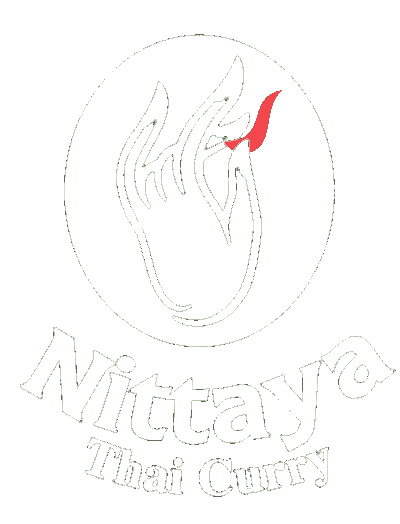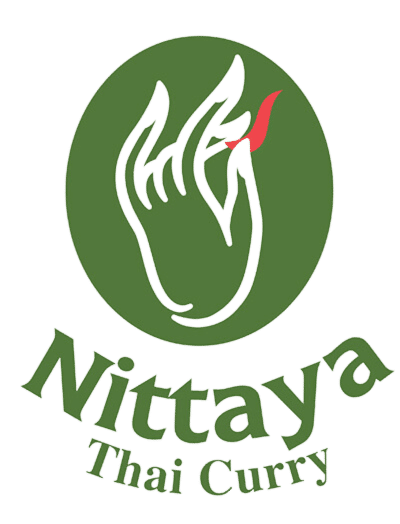How To Use Red Curry Paste
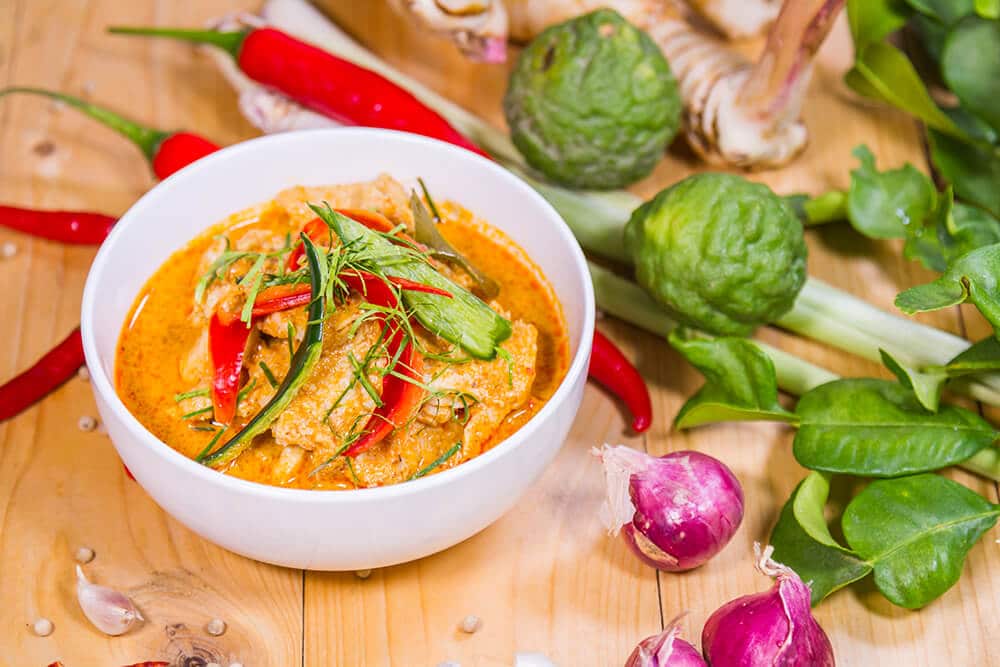
Table of Contents
What Is Red Curry Paste?
Red curry paste is quite a complex mixture composed of a variety of herbs, spices, and oils. It forms a concentrated mixture of diverse flavours. Typically, it is added in small amounts to a pan or wok, allowed to heat up, and serves as the foundational flavour base of Thai red curry.
Despite the fact that perhaps the number one ingredient in the paste is chilies, it’s not as hot as Thai green curry paste while still having a kick to it.
Is Red Curry Paste Spicy?
Compared to other Thai curry pastes, red curry paste is quite spicy, but it’s not as spicy as the fiery green curry paste.
Typically, Thai red curry paste is made with dried red chillies, also known as “prik chee fah” in Thai. These chilies have a Scoville Heat Unit (SHU) score of between 5,000 and 30,000. For context, a jalapeno chilli has a score of between 4,000 and 8,500 Scoville Heat Units.
This is very different from Thai green curry, which uses Bird’s Eye chilies most commonly. These are extremely hot, and have a SHU score of between 50,000, and 100,000! These different chilli peppers are used so that red curry is a bit more aromatic and mellow than green curry.
Red Curry Paste Ingredients
The primary ingredient of red curry paste is red chilies, though typically only one or two per batch, to make for a less spicy final paste. The chilies are bought together with garlic, shallots, galangal, shrimp paste, salt, kaffir lime peel, and lemongrass. Some recipes include cumin seeds, coriander and peppercorns, although these are optional and not part of the main ingredient list.
These ingredients are added to a mortar all together and pounded with a pestle until a thick paste forms. This process is done because mashing the items into a paste gives every single ingredient a lot of surface area, so when the paste is fried, a lot of flavour is released very quickly.
Typically, Thai red curry paste is made with dried red chillies, also known as “prik chee fah” in Thai. These chilies have a Scoville Heat Unit (SHU) score of between 5,000 and 30,000. For context, a jalapeno chilli has a score of between 4,000 and 8,500 Scoville Heat Units.
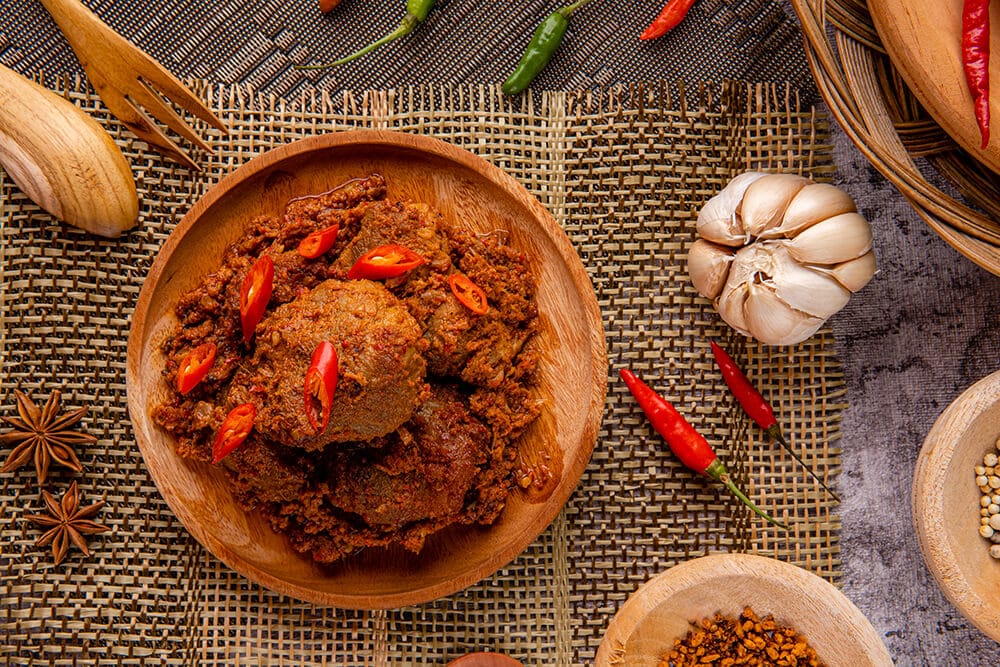
How To Make a Thai Red Curry
Using red curry paste is a really easy way to create an authentic Thai curry in your home. A great way to do this is to use a high-quality curry paste, such as Nittaya Red Curry paste, which is made with traditional ingredients and designed to be easy to use, ensuring a delightful culinary adventure.
The best way to get started is to add a small amount of coconut milk or vegetable oil to your pan, allowing it to melt, and then become shimmering hot. Once it’s totally hot, add in the red curry paste! Typically, we would recommend two to three tablespoons, depending on how much you’re making, and the intensity of the flavour you’re aiming for.
If you want to have a less intensely flavoured curry, aim to only use a tablespoon or so of the red curry paste. To maintain the beautiful red colour, you could add finely diced red bell peppers to your curry at the same time as the curry paste!
Keep the paste moving around in the pan so that it doesn’t burn, and continue to fry it for around two to three minutes. Over time, it will take on a slightly darker colour, and become very intensely aromatic. Ensure that the paste doesn’t burn, as that will impart a burned flavour to the rest of the dish as you keep cooking.
After those few minutes, you can add a can of coconut milk, and wait for it to begin to gently bubble. Ensure that the paste and the peppers (if you’re using them) are well dispersed throughout the milk). When the coconut milk starts to bubble, you can add any remaining veggies and protein that you’re using, and simmer until everything is cooked to your liking. Typically, cooks recommend about ten minutes of simmering for most curries.
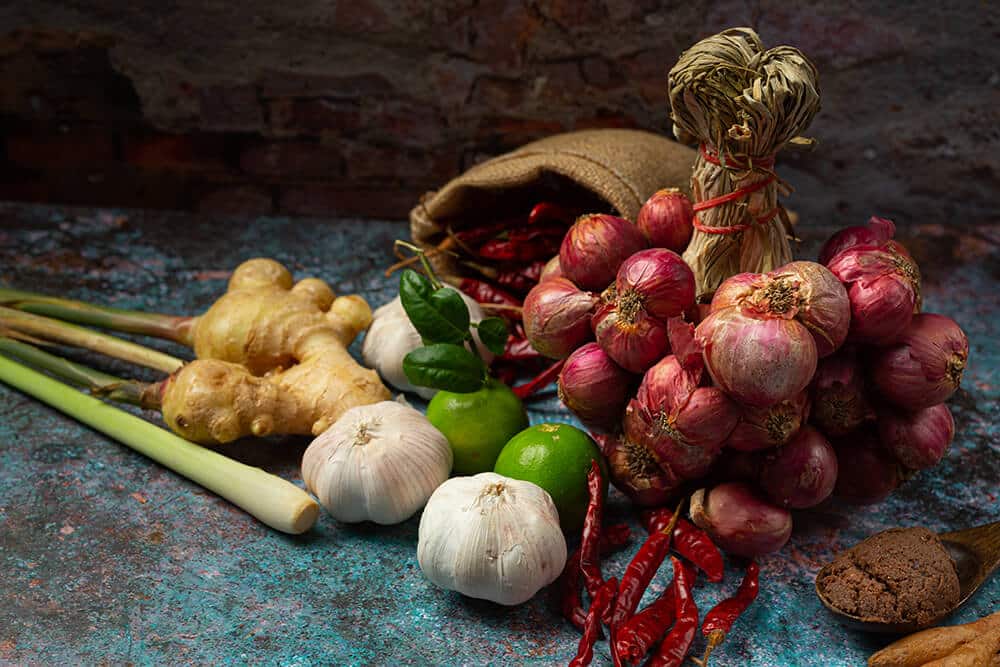
How To Make a Thai Red Curry
Thai red curry, made with Nittaya Red Curry Paste, can be a really wonderful example of Thai cuisine that’s not just tasty, but really authentic too! Here is a simple recipe that makes up to four servings:
Ingredients
- 50 grams of Nittaya Thai Red Curry Paste
- 1 tbsp vegetable oil
- 250ml chicken stock
- 300 grams of coconut milk
- 1 tsp sugar
- 1-2 tbsp fish sauce
- 350g chicken thighs, cut into small slices
- 150g pumpkin/butternut squash, skinned and cubed to bite-sized pieces
- 120g Thai eggplant (other vegetables can also be used)
- Fresh chillies, seeds removed
- 10-15 Sweet Basil leaves
Method
- Heat the cooking oil/coconut milk in a large, heavy-based wok or skillet – bring it to a medium-high heat, until shimmering.
- Add the Nittaya Thai Red curry paste to the dish, and cook for around two minutes, until it becomes intensely aromatic.
- Add the remaining coconut milk to the pan, and stir. Bring to a gentle simmer, and as the mixture starts to bubble, add the chicken. Spread it out, and lower the heat, simmering everything in the pan for 8-10 minutes and the chicken is cooked.
- Do a quick taste test, and add fish sauce and sugar to taste.
- Add the pumpkin and beans. Cook everything together for around three minutes, at which point the pumpkin should be just cooked but still toothsome.
- Remove from the heat, add the fresh chilies and sweet basil leaves, and serve over steamed jasmine rice.
Bonus Recipe Ideas
Nittaya Thai Red Curry paste makes an amazing curry, but it can be used for so many great things! For example, adding a tablespoon to a pot of soup can really kick things up a notch, especially for sweeter flavours, like in carrot and coriander soup.
You could also dissolve the paste in a neutral carrier oil, and use that mixture to make a really great marinade before your next barbecue – just imagine burgers marinated in Thai Red Curry spices!
